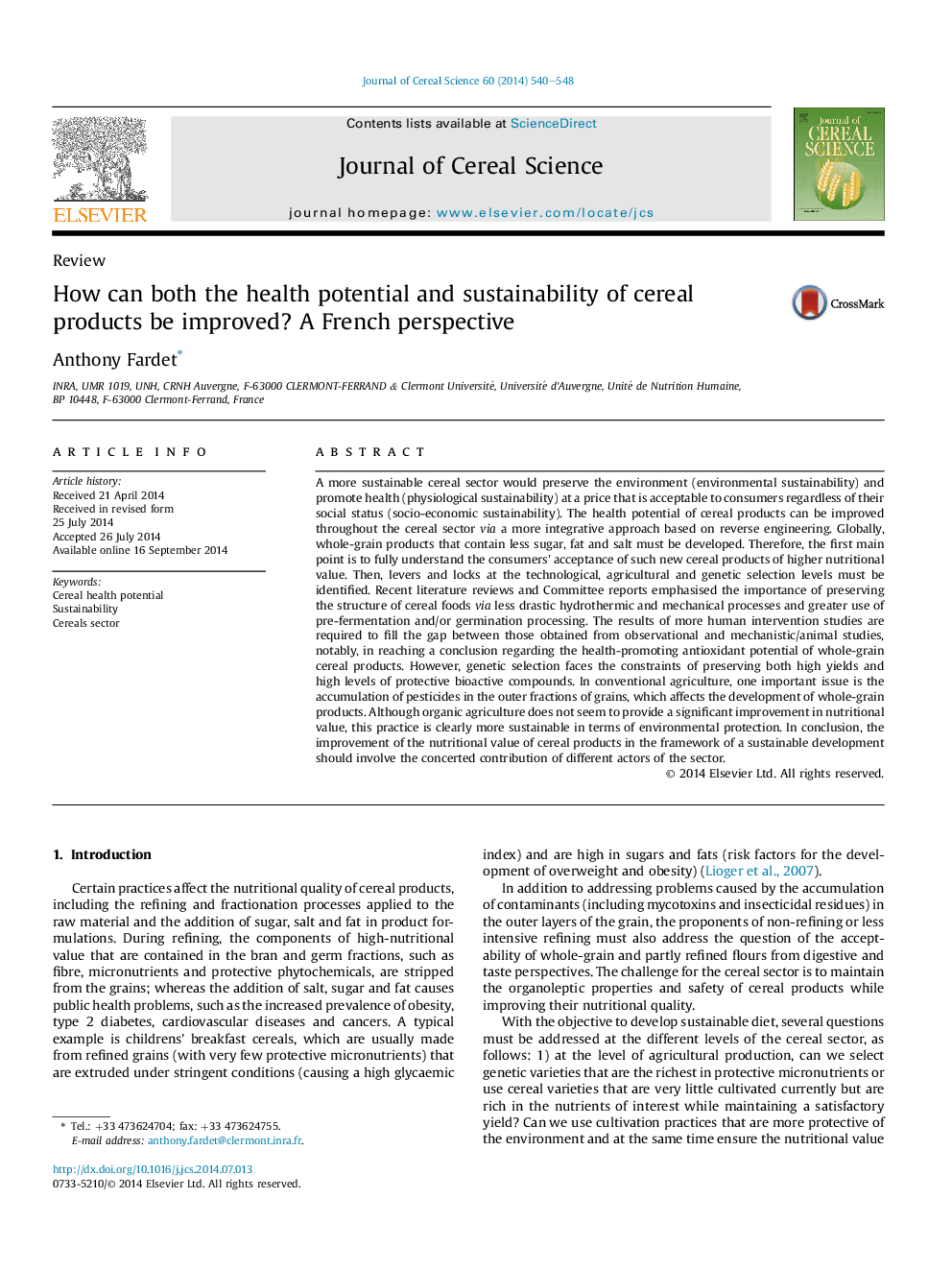| Article ID | Journal | Published Year | Pages | File Type |
|---|---|---|---|---|
| 4515756 | Journal of Cereal Science | 2014 | 9 Pages |
•Cereal health potential should be improved throughout the whole sector.•This can be reached and addressed via a more integrative and reverse approach.•Cereal food structure plays a crucial role in its health effects.•The main point is consumer's acceptance and compliance.•Softer and less drastic technological treatments should be emphasized and developed.
A more sustainable cereal sector would preserve the environment (environmental sustainability) and promote health (physiological sustainability) at a price that is acceptable to consumers regardless of their social status (socio-economic sustainability). The health potential of cereal products can be improved throughout the cereal sector via a more integrative approach based on reverse engineering. Globally, whole-grain products that contain less sugar, fat and salt must be developed. Therefore, the first main point is to fully understand the consumers' acceptance of such new cereal products of higher nutritional value. Then, levers and locks at the technological, agricultural and genetic selection levels must be identified. Recent literature reviews and Committee reports emphasised the importance of preserving the structure of cereal foods via less drastic hydrothermic and mechanical processes and greater use of pre-fermentation and/or germination processing. The results of more human intervention studies are required to fill the gap between those obtained from observational and mechanistic/animal studies, notably, in reaching a conclusion regarding the health-promoting antioxidant potential of whole-grain cereal products. However, genetic selection faces the constraints of preserving both high yields and high levels of protective bioactive compounds. In conventional agriculture, one important issue is the accumulation of pesticides in the outer fractions of grains, which affects the development of whole-grain products. Although organic agriculture does not seem to provide a significant improvement in nutritional value, this practice is clearly more sustainable in terms of environmental protection. In conclusion, the improvement of the nutritional value of cereal products in the framework of a sustainable development should involve the concerted contribution of different actors of the sector.
